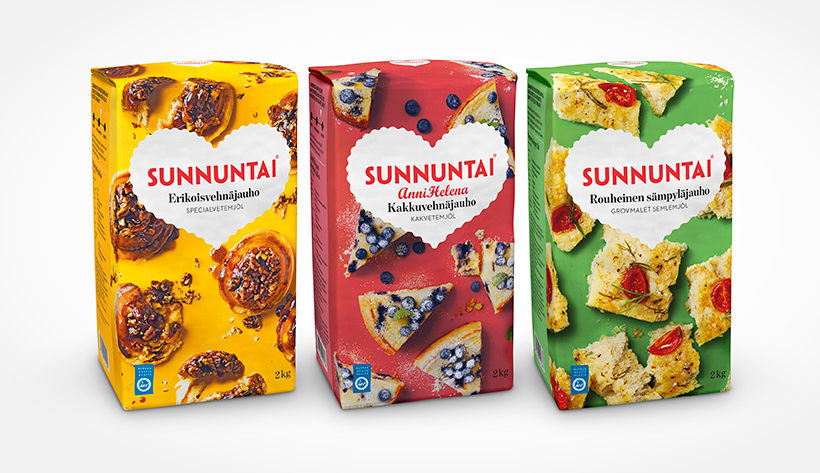
More Sustainable Package Printing
Until now, the sustainability of packaging has been connected to the choice of packaging materials and their recyclability. The new, high-quality EGP (Expanded Gamut Printing) technology allows us to pay attention to environmental matters even during the printing process. With the EGP method, the consumption of inks and the need for process cleaning between jobs are minimised, while the amount of waste and the need for solvents are also reduced. EGP also enables gang prints of different products, which makes printing production more flexible and efficient.
The paper bags of Raisio’s Sunnuntai baking products, which recently underwent a design change, are an excellent example of how packaging printing can be made eco-friendlier and also higher-quality with the help of the new technology. Raisio is now entitled to use the GreenerPrinting™ label on these products.
EGP benefits the entire production chain
The benefits of the EGP process can be seen throughout the production chain from the design to the finished product on the grocery store shelf. Marko Salonen, creative at BOND Agency, who was in charge of the design of the Sunnuntai bags, describes the comprehensive benefits of the EGP technology from a designer's perspective:
“I see EGP as a comprehensive technology that allows me to do anything; I no longer need to think how many Pantone colors I can pick and on what I should use my one additional color option. The best part is that EGP feels like ‘a new CMYK on steroids’ – it makes design so much freer.”
The brand owner is particularly interested in how the packaging stands out on the store shelf. This is affected by the quality of the images and the brightness of the colors. “Now, the baked goods in the images look even more delicious, and the colors look brighter,” says Pauliina Öhma, Raisio’s Brand Manager.
Towards greener printing
In addition to allowing designers to select nearly unlimited colors and reproducing bright colors from one run to the next, EGP also reduces the carbon footprint of the printing process. Marko Salonen believes that eco-friendly packaging solutions are on the increase:
“Environmental thinking is constantly present in packaging design, but it mostly focuses on the packaging materials. The environmental impact of inks hasn’t really been discussed before. It’s great that we’ve made progress on this subject.”
Environmental sustainability is a part of the core values of an increasing number of brands, and it influences the purchase decisions of a growing customer base. Öhman says that Raisio, too, focuses on wholesome and sustainable food, which naturally means that the sustainability of the food packages is considered important, as well. “Our goal is to phase out plastic packaging in consumer products by the end of 2023. Additionally, we want to ensure that all consumer packaging will be recyclable. Even now, most of our products are packed in recyclable paper and paperboard packages, but we want to make them even more sustainable through printing technology, among other things,” Öhman says.
Marvaco, the European pioneer in EGP and the prepress partner in the update to the Sunnuntai packages, sees the benefits of the new technology and has already granted EGP™ partnership certificates to several of its printing partners. Peltolan Inc, who prints the Sunnuntai bags, recently became the world’s first paper packaging printer to receive this certificate. The certification requires that the production quality and performance of the printer is verified by examining several jobs on different brand owners’ packages.
Marvaco is also responsible for overseeing the criteria for the GreenerPrinting™ label. The printing of the products entitled to the label demonstrates the greatest benefit gained from the EGP technology: more sustainable production.
Source: Marvaco






